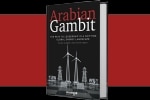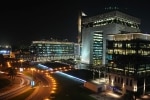An evolving luxury landscape may present an opening for the GCC to establish itself as a preeminent luxury destination.
After several years of important expansion, there was notably slower growth in global luxury market during 2024. A combination of economic headwinds in key markets, shifting consumer priorities, and a shrinking luxury customer base resulted in weaker financial performance for many leading brands. According to company reports, LVMH, the world's largest luxury goods conglomerate, saw its full-year net profits fall by 17%,i while Swatch Group (owner of luxury watch brands such as Omega),ii and Kering experienced revenue declines of 12.2% and 15%, respectively.iii
Listen to this article here!
As brands grapple with these challenges, they are looking to diversify their retail presence in other markets. The GCC is currently well positioned to make inroads.
Despite the global luxury market slowdown, the GCC region remains a thriving hub. A Chalhoub report estimated the personal luxury market reached $12.5 billion in 2023.iv Specifically, high-end fashion recorded a 10% increase, driven by strong demand for designer apparel and accessories, and luxury beauty grew 15%, fueled by a surge in premium skincare, fragrances, and cosmetics.
This momentum highlights the GCC’s resilient, dynamic luxury landscape. Already home to many high-net-worth
individuals (HNWIs), the region is attracting a record inflow of these consumers. For instance, the UAE was
projected to welcome a record $6700 HNWIs in 2024, and the number of millionaires in Saudi Arabia’s
top cities is expected to double over the next 10 years.v
The region must address a disparity in the development of its luxury markets. Our research indicates that Dubai has established itself as a leading destination, with luxury retail spending per HNWI at approximately $58,000, in line with global benchmark cities such as London ($54,000) and New York ($62,000). However, other GCC cities are still in the early stages of development. For example, in Riyadh spending per HNWI is $24,000.
A key reason for this lower spending in some GCC cities is that a substantial portion of GCC consumers take their luxury spending abroad. For example, we estimate that in 2023 Saudi consumers made approximately 40 to 50% of total luxury purchases outside their country.
A number of GCC destinations can seize important opportunities if they address structural challenges. The availability of leading luxury brands is uneven. For instance, Riyadh has 65% brand coverage compared with Doha (75%) and Dubai (90%), demonstrating the potential in the Saudi market. What the less well served destinations need is more flagship stores, retail offerings, supporting, infrastructure, premium activations, and innovative shopping experiences.
The luxury sector also faces a shortage of skilled retail professionals trained to deliver the high-touch, personalized service that affluent consumers expect. Luxury brands also face challenges in navigating local market regulations to set up businesses and investing locally.
Destinations that can overcome these obstacles could capture the increasing demand for luxury goods. According to our recent survey of GCC luxury shoppers, a significant portion of consumers plan to increase their spending across luxury categories such as watches (47% of respondents), jewelry (44%), leather goods (42%), and cars (40%). Moreover, unprecedented investments in the region’s tourism and key luxury destinations—such as NEOM, Red Sea, Al Ula, and Diriyah—are further solidifying its appeal to luxury brands and affluent travelers.
To unlock the full potential of the GCC’s market, the entire luxury ecosystem must ensure infrastructure, regulations, and retail offerings evolve in line with the region’s growing demand. Governments and brands should be prepared to take the lead.
Governments can foster a pro-business environment by streamlining licensing processes, retail business requirements, customs regulations, localization policies, and tax refund schemes. Building a strong talent pipeline, including the development of specialized training programs, can fill the current gap in human capital. Government stakeholders can also diversify their country’s luxury offerings, moving beyond traditional retail spaces to luxury outlet malls, auction houses, and dedicated luxury districts. Governments can play a role in creating the right environment to enable high-end, personalized services, from chauffeur-driven transport and private shopping experiences to concierge services, that seamlessly integrate into the luxury retail ecosystem.
In parallel, luxury brands must also refine their approach. With numerous developments across the region positioning themselves as luxury destinations, brands should prioritize locations with the highest potential, considering factors such as foot traffic, spending, brand clustering, and long-term viability. Brands can also collaborate with local investors and developers to manage market entry complexities and accelerate expansion. They can keep pace with changing consumer preferences by developing immersive retail experiences that go beyond traditional shopping, integrating art, hospitality, and exclusive brand activations. To prevent spending leakage, brands should maintain a consistent supply of high-demand, iconic products and offerings tailored to regional preferences and shopping behaviors.
The GCC has the potential to become the next frontier for luxury, but it will take coordinated action across the entire ecosystem to seize the opportunity.
This article originally appeared in Arabian business, April 2025.
In the news
How to lead the future of global luxury in the GCC
An evolving luxury landscape may present an opening for the GCC to establish itself as a preeminent luxury destination.

Contact us

















Menu